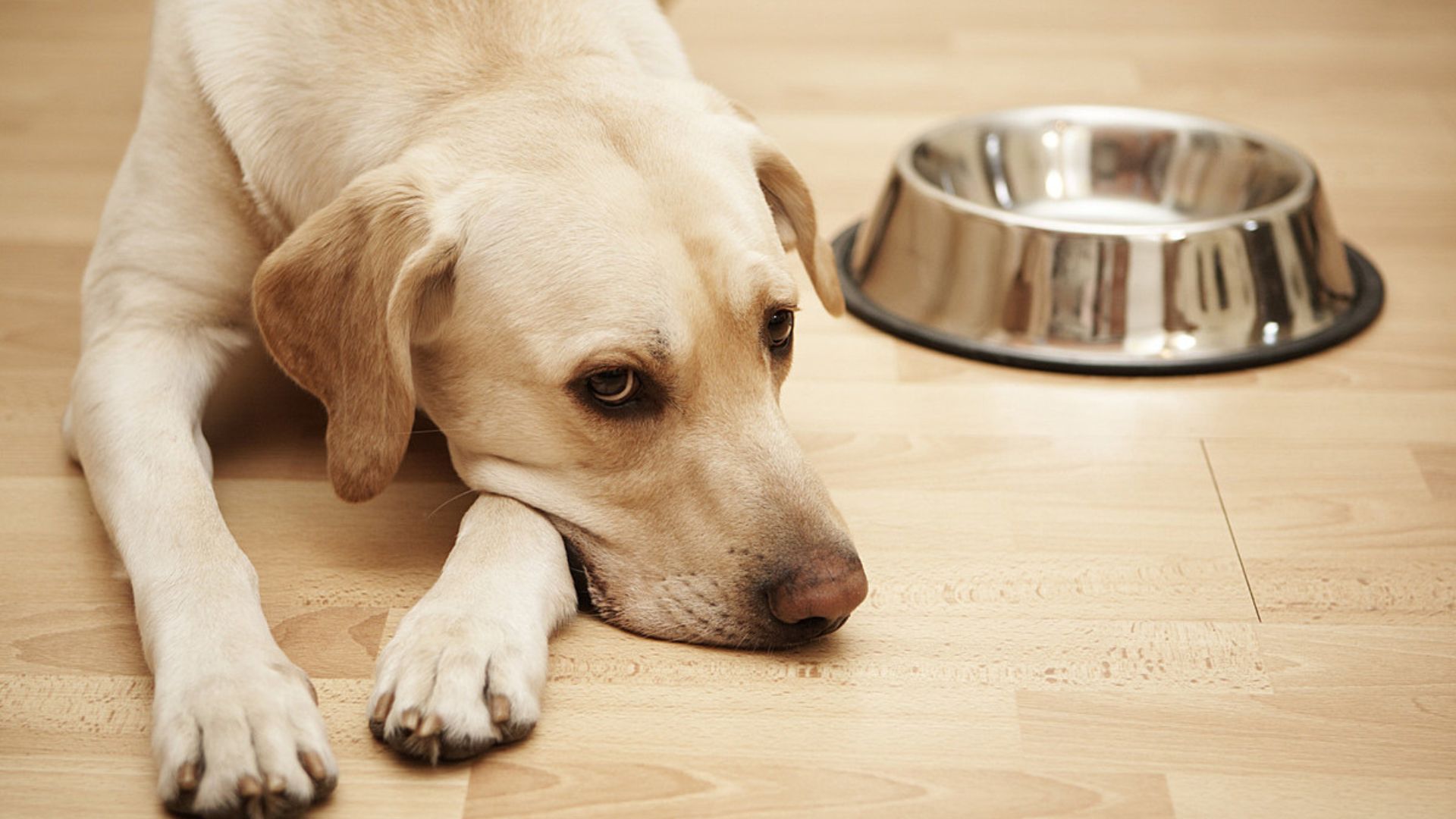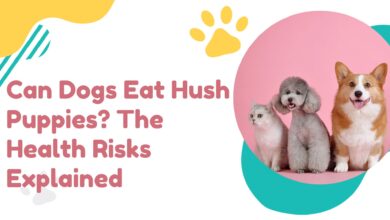Can Dogs Eat Chorizo?
This Greasy Sausage Causes Painful Pancreatitis, Vomiting, and May Be Fatal. Discover the Toxic Ingredients Lurking Inside Chorizo and Safer Food Alternatives for Your Pup.

It’s hard to resist feeding our furry friends scraps from the dinner table, especially when they look at us with those pleading eyes. However, some human foods like chorizo can be incredibly dangerous for dogs.
Can Dogs Eat Chorizo? Chorizo may smell tempting, but it contains several ingredients that can wreak havoc on your dog’s health. Keep reading to learn all about the risks of dogs eating chorizo sausage.
What is Chorizo?
Chorizo is a greasy, seasoned sausage originating from Spanish and Portuguese cuisines. Traditional chorizo consists of coarsely chopped pork and pork fat, combined with spices like paprika, garlic, chili powder, cumin, oregano, salt, and vinegar.
There are many regional variations, but most chorizo is high in fat and salt content. Other types are made from beef, chicken, or turkey as well. Some Mexican-style chorizo uses vinegar instead of fermenting the meat.
Before consumption, chorizo is usually sliced and fried to release its robust, spicy flavors.
Is Chorizo Good for Dogs?
In short – no. Chorizo should never constitute any part of your dog’s diet. The high amounts of fat, sodium, and spices make chorizo very problematic for canines.
Dogs have much more sensitive stomachs than humans, and chorizo can wreak havoc in several ways. The richness can lead to gastrointestinal upset, causing vomiting, diarrhea, and gas.
Ingredients like onions and garlic are toxic for dogs as well. The high-fat content also puts dogs at risk for developing pancreatitis, a serious and potentially fatal inflammation of the pancreas.
Ingredients in Chorizo Harmful to Dogs
Let’s take a closer look at some of the most concerning ingredients for dogs found in chorizo:
- Pork/beef/chicken fat – Too high in fat for dogs, can cause pancreatitis.
- Garlic and onion powder – Toxic to dogs, damages red blood cells.
- Paprika and chili powder – Spicy seasonings irritate dogs’ gastrointestinal tract.
- Salt and nitrates – Excessive sodium is dangerous, and can cause electrolyte imbalances.
- Vinegar – Acidic and can upset dogs’ stomachs.
The bottom line is that chorizo contains multiple ingredients unsafe for dogs. The salt, spices, fat content, and preservatives pose too much of a toxicity risk, making it an unwise choice to feed dogs any amount of chorizo sausage.
Dramatization of Dog Begging for Chorizo
The aroma of sizzling chorizo fills the kitchen as you prepare dinner. Suddenly, you feel a nudge at your leg. You look down to see your dog staring longingly at the chorizo, a string of drool hanging from his mouth.
“Can I have a bite?” It seems to ask with those big pleading eyes. It’s hard to resist slipping him a tasty morsel.
But you must stay strong – that delicious chorizo could land him in the emergency vet with severe vomiting or diarrhea. You give him a pat and redirect his attention to his own bowl of kibble.
Sam may not be happy now, but his good health is what matters most.
Health Risks of Feeding Dogs Chorizo
Now that you know what chorizo is made of, let’s explore in more detail the adverse health effects it can have on dogs if consumed. Now question is this, Can Dogs Eat Chorizo?
- Pancreatitis – One of the most dangerous conditions. High-fat foods like chorizo can cause the pancreas to become inflamed and painful. Severe abdominal pain, loss of appetite, vomiting, diarrhea, dehydration, fever, and rapid breathing are common symptoms. Pancreatitis can be fatal if left untreated.
- Gastrointestinal issues – Dogs’ sensitive stomachs struggle to digest fatty, spicy human foods like chorizo. Vomiting, diarrhea, gas, and abdominal pain are likely outcomes of a dog consuming chorizo.
- Sodium toxicity – The high salt content can cause electrolyte imbalances and salt poisoning. Excess sodium is toxic to dogs.
- Obesity – The high-fat content adds unnecessary calories and weight gain that strains the body. Obesity exacerbates other health issues.
Signs of Chorizo Poisoning in Dogs
Look out for the following symptoms if you suspect your dog ate chorizo:
- Vomiting
- Diarrhea
- Lethargy
- Abdominal pain
- Gas
- Dehydration
More serious poisoning cases may also involve painful pancreatitis symptoms like loss of appetite, fever, rapid breathing, and abdominal pain.
Seek veterinary help immediately if your dog displays any concerning symptoms after eating chorizo. Early treatment greatly improves the prognosis.
Read More: Can Dogs Eat Rotisserie Chicken?
How Much Chorizo Can Dogs Eat Chorizo?
Ideally, dogs should not consume any chorizo whatsoever. Even small amounts can irritate the digestive tract. Dogs with pancreatitis or sodium-restricted diets are at greater risk of adverse effects.
Spicy, greasy chorizo packed with seasonings and preservatives poses too great a toxicity risk for dogs. Talk to your vet before feeding dogs any non-traditional foods.
Safe Human Foods for Dogs
Chorizo should be off limits, but dogs can safely enjoy many people’s foods in moderation, such as:
- Cooked, lean meat (chicken, turkey, beef)
- Hard-boiled or scrambled eggs
- Rice, oatmeal, quinoa
- Peanut butter
- Cooked vegetables
- Certain fruits like apples, bananas, blueberries
Compare Nutrition Facts: Chorizo vs. Dog-Safe Alternative
| Nutrient | Regular Pork Chorizo | Dog-Safe Chicken & Sweet Potato Sausage |
| Fat | 15g | 3g |
| Sodium | 450mg | 80mg |
| Ingredients | Pork, paprika, garlic, salt | Chicken, sweet potato, parsley |
As shown above, a homemade dog-safe sausage has dramatically less fat and sodium, using dog-friendly ingredients.
Chorizo Alternatives for Dogs

Rather than feeding your dog actual chorizo, consider these safer alternatives to satisfy their cravings:
- Dehydrated meats – Look for low-sodium products with no spices.
- Veggie-based sausages – Try soy or grain-free varieties. Choose low-fat and low-sodium.
- Plain-boiled chicken or turkey – Shredded white meat is a healthy choice.
- Sweet potatoes – Mash as a substitute for greasy chorizo crumbles.
- Pumpkin or cottage cheese – Low-fat options to mimic texture.
Homemade Dog-Safe Chorizo Recipe
Whip up a batch of this pet-friendly recipe:
- 1 lb. ground chicken
- 1 small sweet potato, peeled and grated
- 1/2 cup low-sodium chicken broth
- 2 tbsp parsley, cilantro, or cumin
- 1/4 tsp garlic powder (optional)
Sauté chicken. Add grated sweet potato, chicken broth, and spices. Cook until heated through. Can freeze portions for easy use later!
What To Do If Your Dog Eats Chorizo
If your dog snacks on chorizo, take action quickly:
- Call your vet right away – They’ll advise if vomiting should be induced.
- Monitor for symptoms – Check for vomiting, diarrhea, lethargy, or other concerning signs.
- Avoid self-treatment – Do not induce vomiting without consulting your vet first.
With prompt vet care, your dog has the best chance of making a full recovery after eating people food they shouldn’t have. Don’t wait to see if symptoms develop on their own.
Preventing Dogs from Eating Chorizo
Set your dog up for success by following these chorizo safety tips:
- Store chorizo out of reach – Place on high shelves or locked containers.
- Never feed from the table – Avoid establishing this bad habit.
- Train a solid “leave it” command – Useful for redirecting attention away from unsafe food.
- Provide plenty of dog-safe chews and toys – Keeps them busy and less likely to steal food.
FAQs
Got questions? Here are some commonly asked topics:
- Is chorizo good for dogs? No, the fat, spices, and sodium make it very unhealthy.
- Can dogs eat Spanish chorizo? No, all types of chorizos should be avoided.
- What happens if a dog eats chorizo? They may experience vomiting, diarrhea, pain, pancreatitis, and other serious conditions.
- Is chorizo safe for pregnant dogs? Absolutely not, as it may cause extreme illness.
In Conclusion
Chorizo’s mouth-watering aroma and flavor may appeal to dogs and humans alike. However, it contains multiple ingredients toxic to our furry companions and should be kept far out of paws’ reach.
Talk to your vet about dog-safe foods to avoid future health scares. With knowledge and proper precautions, we can keep our dogs happy and healthy.



